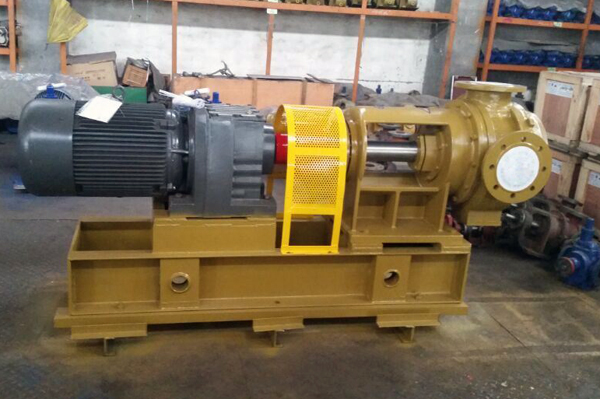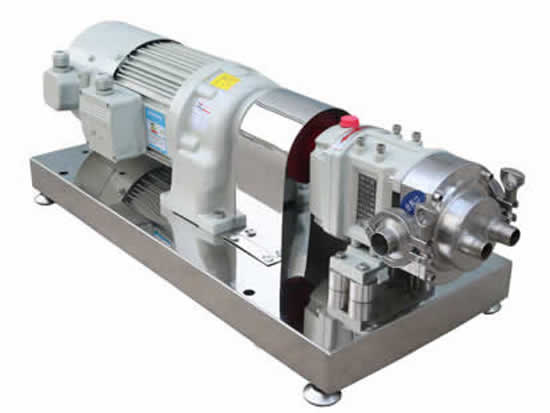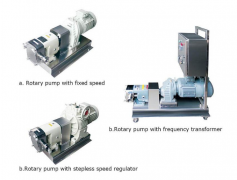In the steam era, the plunger pump is the main force for conveying high-viscosity materials, and the reciprocating pump can be called the originator of the high-viscosity gear pump. However, with the popularity of internal combustion engines and electric motors, and the limitations of reciprocating plunger pumps becoming more and more prominent, their use as high-viscosity gear pumps has almost ceased, and they have evolved into sophisticated products with advantages such as rate and metering. High pressure hydraulic pump or metering pump. Therefore, another large class of positive displacement pumps, the high viscosity pump, has become the main force of the high viscosity gear pump of the Seken pump industry. Through the survival of the fittest, in the past few decades, basically four types of rotor pumps are still used in various high-viscosity applications, namely gear pumps, single-screw pumps, twin-screw pumps, cam rotor pumps, called high-viscosity gear pumps. . However, the scope and development prospects of these four types of rotor pumps are also different.

If it is confirmed that the high-viscosity gear pump has no flow output, it may be because the pump device is wrong, the pump is turned, or the suction side (inlet and suction pipe) is infested, and the outlet check valve is reversed or stuck. It may be that the drive shaft has broken. High-viscosity gear pumps can cause a lack of fluid output when the speed is too low. This phenomenon is often caused by the slippage or power shortage of the pump drive installation. At this time, the actual speed of the gear pump, the connection of the pump and the motor and the matching of the power should be checked.
At present, domestic and international research on pumping cable perforation and drillable bridge plug segmentation fracturing technology mainly focuses on tool development and construction technology research, but no research report on pumping
parameter control method. On the basis of establishing the hydraulic model of the cable sealing system and the mechanical analysis model of the tube string during the pumping process, the pressure control equation of the cable grease sealing pressure, the control equation of the structural string of the pipe string and the pumping displacement control equation are derived, and the wellhead injection is analyzed. Control methods for key parameters such as grease sealing pressure, small string mass and length, and pump displacement.
The fluid noise of the high-viscosity gear pump of the Saiken pump refers to the pressure shock and flow pulsation generated during the working process, causing the noise generated by the vibration of the connected hydraulic components such as the oil pipe, the hydraulic valve and the oil cylinder. The fluid noise is closely related to the sudden change of the pressure in the plunger chamber. The process of instantaneous change of the plunger chamber pressure during the flow of the high-viscosity gear pump is deeply understood. The mathematical model and test of the pressure transient process of the plunger chamber are the key to this type of research. Flow pulsation is recognized as one of the main causes of fluid noise in high-viscosity gear pumps. By testing the flow pulsation and combining theoretical analysis to obtain the influence of pump internal structural parameters on noise, finding the mechanism to reduce fluid noise is another research focus.
The good use characteristics of the Saiken pump high-viscosity gear pump make it widely used and popularized in different fields, so the quality of the high-viscosity gear pump should be guaranteed to ensure its use value. The Saiken pump industry advises you to pay attention to the above matters when purchasing high-viscosity gear pumps. It can guarantee the purchase of high-viscosity gear pumps without major failures in use. High-viscosity gear pump (mechanical booster pump) unit after running for a period of time, abnormal noise generated in the high-viscosity gear pump, there may be the following reasons:
1. The large abrasive particles generated in the production process enter the high-viscosity gear pump and cause the wear of the parts.
2. The placement of the high-viscosity gear pump is incorrect, for example, tilting. The amount of oil in the pump is not suitable.
3. The starting pressure of the high-viscosity gear pump is too high, causing the pump parts to overheat and be damaged (some mechanical booster pumps can be started under atmospheric pressure after special design).
The high-viscosity gear pump noise can be divided into two categories: fluid noise and mechanical noise. The first three are fluid noise, the fourth is mechanical noise, and the fluid noise is the main component of the pump noise. It is also a high-viscosity pump. One of the important contents of noise reduction research. The high-viscosity gear pump structure determines that the flow pulsation is an inherent characteristic of the pump. Since the axial high-viscosity pump has multiple plungers in the oil discharge chamber and the oil inlet chamber at the same time, the instantaneous flow rate of the pump is the same instantaneously all in the oil discharge chamber column. The sum of the instantaneous flow rates of the plugs, ie the output flow of the high viscosity gear pump, is a superposition of the half sinusoidal flow of each plunger. For hydraulic pumps with different numbers of plungers, there is a corresponding inherent flow pulsation. Due to the flow pulsation of the high-viscosity gear pump, the pressure pulsation of the pump outlet and the pipeline will be caused to propagate to the entire system, and fluid noise will be generated at the same time.






 +86-317-8227664
+86-317-8227664 Annie@saikenpumps.com
Annie@saikenpumps.com









 +8617731766260/15094407290
+8617731766260/15094407290 +86-317-8227664
+86-317-8227664
 +8615094407290
+8615094407290